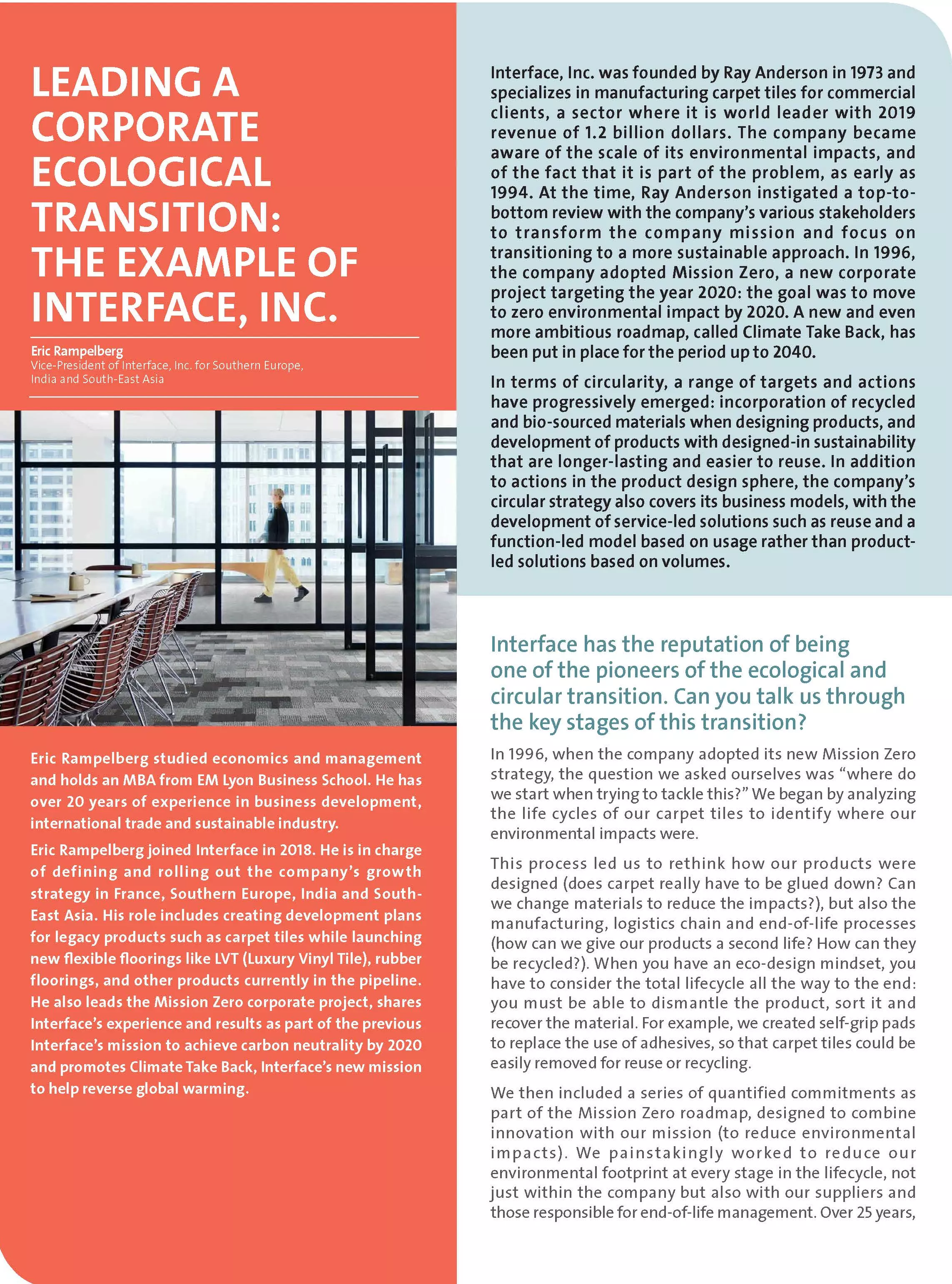Eric Rampelberg
Vice-President of Interface, Inc. for Southern Europe, India and South-East Asia
Interface, Inc. was founded by Ray Anderson in 1973 and specializes in manufacturing carpet tiles for commercial clients, a sector where it is world leader with 2019 revenue of 1.2 billion dollars. The company became aware of the scale of its environmental impacts, and of the fact that it is part of the problem, as early as 1994. At the time, Ray Anderson instigated a top-to-bottom review with the company’s various stakeholders to transform the company mission and focus on transitioning to a more sustainable approach. In 1996, the company adopted Mission Zero, a new corporate project targeting the year 2020: the goal was to move to zero environmental impact by 2020. A new and even more ambitious roadmap, called Climate Take Back, has been put in place for the period up to 2040.
In terms of circularity, a range of targets and actions have progressively emerged: incorporation of recycled and bio-sourced materials when designing products, and development of products with designed-in sustainability that are longer-lasting and easier to reuse. In addition to actions in the product design sphere, the company’s circular strategy also covers its business models, with the development of service-led solutions such as reuse and a function-led model based on usage rather than product-led solutions based on volumes.



